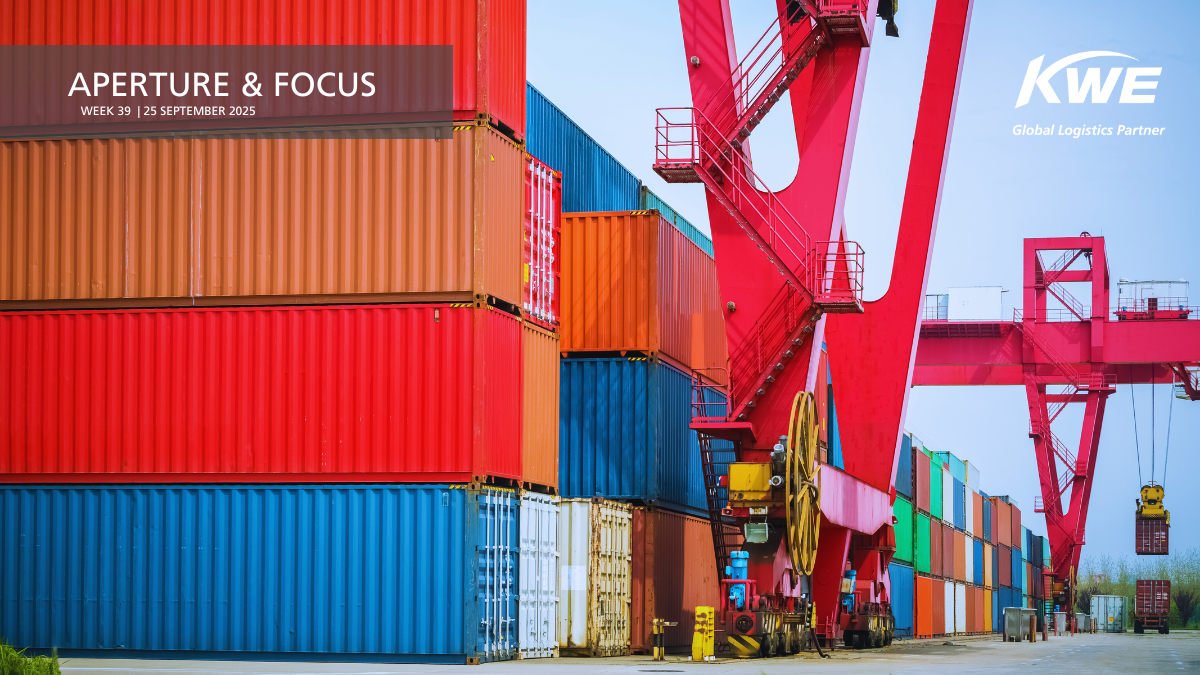Quote
Aperture & Focus 2025: Week 39

Global Aperture
Average container port productivity declined worldwide between 2020 and 2024 due to disruptions including the Red Sea crisis, Panama Canal restrictions, and the pandemic, according to the World Bank Group and S&P Global Market Intelligence’s Container Port Performance Index. Despite the global decline, East Asian ports improved efficiency and South Asian ports showed strong recovery.
The International Air Transport Association (IATA) released a study on September 23rd confirming that sufficient sustainable feedstock exists to produce about 551 million U.S. tons of sustainable aviation fuel needed annually for airlines to reach net zero emissions by 2050. The main challenge is scaling up new production technologies beyond the limited use of cooking oil-based fuel, while competing with other industries for biomass.
The United States and United Kingdom signed a Memorandum of Understanding, establishing the Technology Prosperity Deal on September 18th, to deepen cooperation. The agreement focuses on joint research, supply chain resilience, and harmonized regulations, with applications ranging from secure nuclear fuel supplies to quantum tools that could enhance logistics and trade efficiency.
The International Maritime Organization’s Net-Zero Framework, scheduled for adoption in October 2025, would establish the first legally binding emissions limits and greenhouse gas pricing system for large ocean-going vessels. The World Business Council for Sustainable Development endorsed the plan for creating clear rules that enable long-term investment in clean technologies and prevent fragmented national policies. In contrast, American Bureau of Shipping (ABS) Chairman and the U.S. administration questioned its feasibility, citing the lack of scalable alternative fuels and the risk of penalizing liquified natural gas and biofuels.
Regional Focus
Americas
United States: Container shipping volumes are projected to enter one of the steepest declines in decades, with the National Retail Federation forecasting inbound volumes to fall 15.7% year-over-year from September through December. Analysts attribute the downturn to revised reciprocal tariffs, weakened U.S. demand compared to global trade growth, and potential new trade measures targeting Chinese-built and operated vessels.
Canada/Mexico: Prime Minister Mark Carney and President Claudia Sheinbaum agreed on September 19–20th to expand rail and port capacity as part of an action plan to offset U.S. tariff barriers. Canadian Pacific Kansas City’s cross-border network and recent infrastructure upgrades, including a new Texas–Mexico bridge, were highlighted as key to strengthening north–south trade flows.
Asia-Pacific
Super Typhoon Ragasa, equivalent to a Category 5 hurricane, made landfall in the Philippines on September 22nd with gusts up to 285 km/h. By September 23rd, the storm had moved west toward southern China, Taiwan, and Vietnam. The hurricane signal No. 10 was downgraded for Hong Kong on September 24th.
India: Air cargo volumes to the United States dropped 8% in mid-September, marking the third consecutive weekly decline since Washington’s 50% tariff on Indian imports took effect on August 27, according to WorldACD. Shipments to Europe have held steadier, slipping just 1% in week 37 and remaining above last year’s levels, underscoring the shift in India’s trade flows.
Europe, Middle East & Africa
Italy: A 24-hour nationwide strike on September 22nd disrupted ports, rail, and public transport as dockworkers and unions protested in solidarity with Gaza. While demonstrations slowed cargo movement at Genoa, Livorno, Venice, and Trieste, operations have since resumed with only minor backlogs anticipated.
United Kingdom: The UK government has approved plans for a second runway at London Gatwick Airport (LGW) to expand capacity at Europe’s busiest single-runway airport by up to 70,000 flights annually by the late 2030s. Nearly two-thirds of the country’s air cargo moves in passenger aircraft belly-hold, and the additional runway is expected to increase both passenger services and freight volumes, potentially doubling air cargo tonnage in the Southeast.